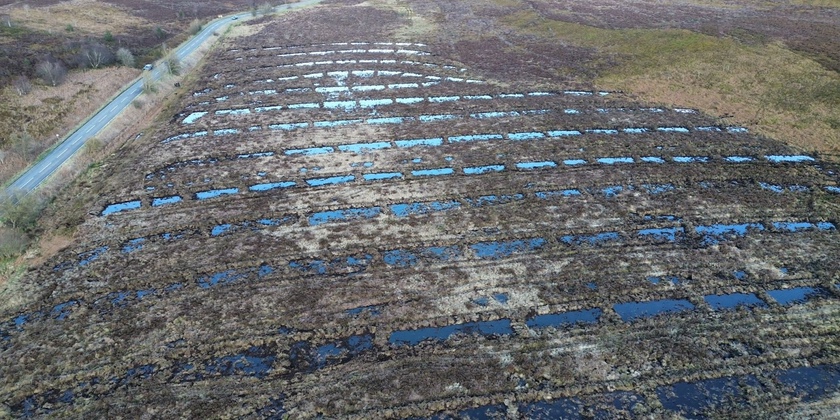Llandegla Moor peatland restored to natural state thanks to recovery works

A programme of work has helped to restore an area of Llandegla peatland.
The Clwydian Range and Dee Valley National Landscape, have been able to secure funding through Natural Resources Wales’ National Peatland Action Program (NPAP) to deliver peatland restoration projects across the area the body covers.
Distribution of peat within the area is occasional and fragmented and much of it is now in unfavourable condition and releasing carbon into the atmosphere due to a history of moorlands being drained for agriculture, self-seeded conifer tress drying up our moors and severe erosion caused through illegal off road use.
Work has now been undertaken at the Llandegla Moor Site of Special Scientific Interest (SSSI,) just off the A5104, to help restore the area to its former natural state.
The Clwydian Range and Dee Valley National Landscape has also carried out work at Llyn Ochin, North Berwyn and Ruabon Moor.
During the works specialist contractors using large excavators with extra wide tracks were employed to block ditches using peat dams to retain and raise water levels on the moors and remove trees that are colonising the moorlands.

The extra wide tracks on the excavators result in them having incredibly low ground pressure when travelling over the moor and bog preventing any unintended damage.
Jack Parry, Moorland Field Officer, said: “Significant works have been undertaken at Llandegla Moor SSSI where contour bunds have been installed using the peat.
“Contour bunds are bunds that span the width of the bog installed to hold and prevent water runoff from the moor, they intersect and block any drains or surface cracks that water could seep through whilst also allow water to pool at the surface raising the water table and providing a vital habitat for wildlife.
“As the bunds and pools begin developing over the next couple of years’ peat associated plants such as sphagnum moss will begin to colonise and store water, eventually forming and storing more peat and carbon.
Emlyn Jones, Head of Planning, Public Protection and Countryside Services, added: “Over the years we have lost a lot of this habitat and this important work will help reverse this trend and provide a lifeline for nature and wildlife that need these habitats to survive and thrive.”
The Clwydian Range and Dee Valley National Landscape team has again been successful this year in securing more funding through NPAP to carry out further surveys of peatlands and form restoration plans to ensure as much carbon as possible is being stored.
Spotted something? Got a story? Email [email protected]












